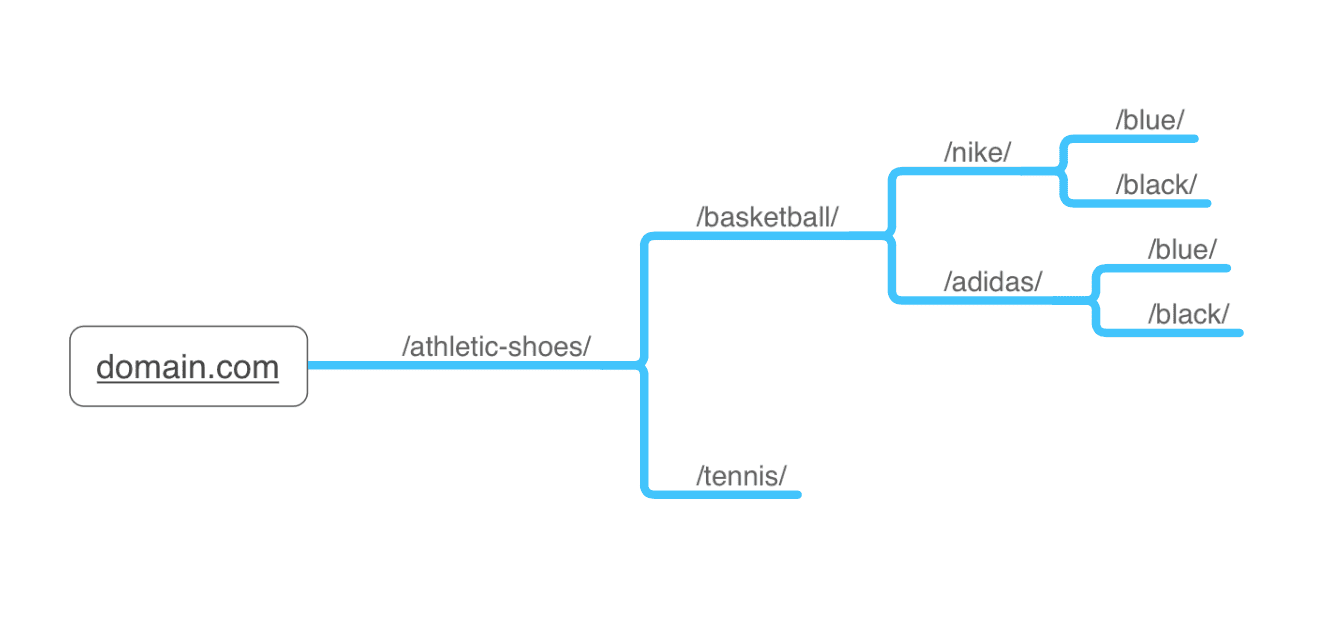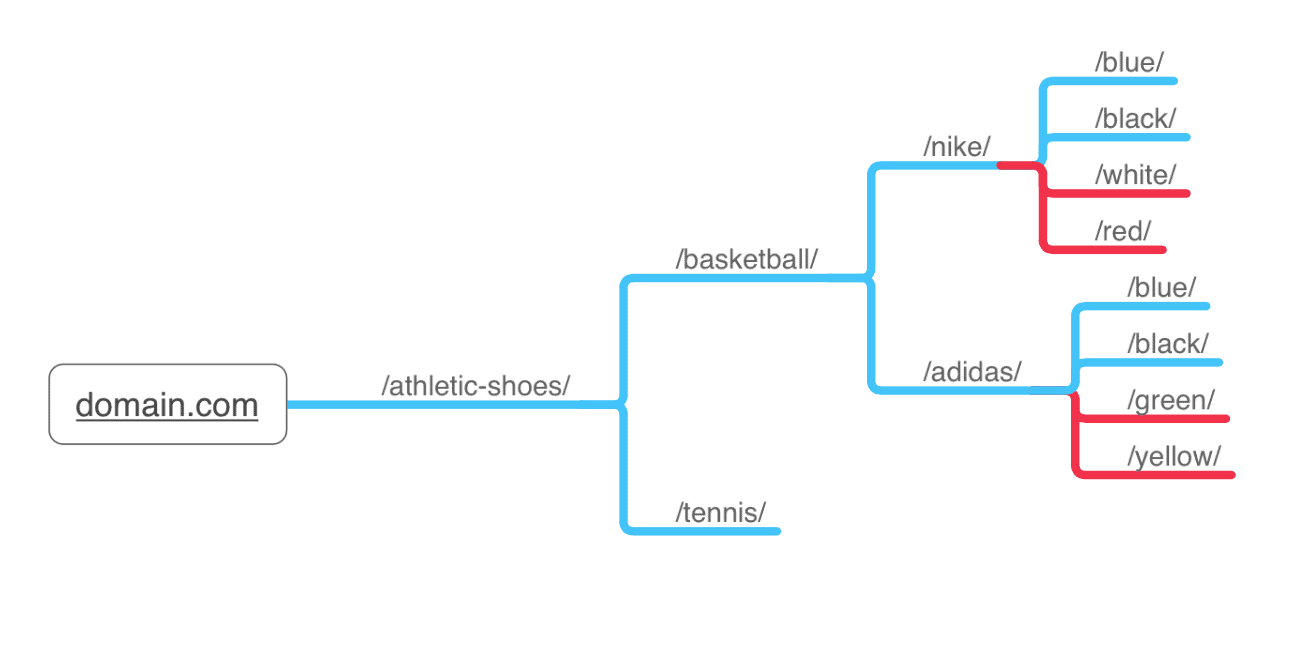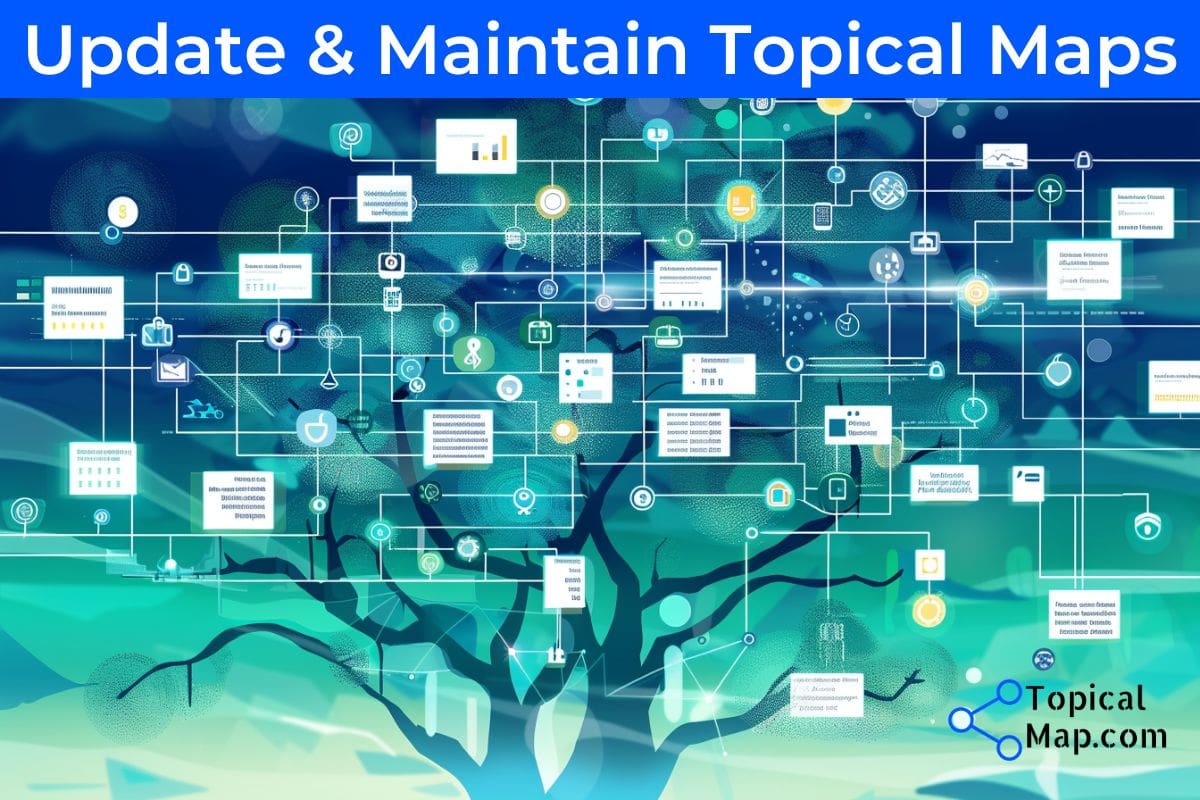Ever wonder why some websites seem to always stay ahead while others fall behind? They update and maintain their topical maps.
Keeping your topical map fresh and accurate is how you’re going to stay on top in the content game. It’s your tool for staying relevant and loved by both your audience and search engines.
Ready to take your content strategy to the next level? We’ll guide you through the process on how to keep your topical map up-to-date and super useful.
Discover best practices for maintaining your topical map, including the importance of regular content audits to keep things fresh.Learn the art of spotting what needs to change and how to fill in content gaps.
Challenges in keeping your topical map fresh? We’ve got solutions. Learn how to tell when your map needs an update and how to deal with common update hurdles.
- Related guide on Topical Maps for SEO
Key Takeaways on How to Update a Topical Map
- Regular Updates: Frequent updates keep your topical map relevant and aligned with audience and search engine needs.
- Content Audits: Regular audits identify content drift and ensure alignment with your topical map for improved SEO.
- Monitoring Trends: Stay informed about industry trends using tools like Google Alerts to keep your topical map current.
- Scalable Topical Hierarchy: Design a clear, scalable taxonomy to manage content growth and maintain structure.
- User-Centric Updates: Use analytics to adjust your topical map based on user behavior and needs.
- Team Training: Regular training and communication ensure team buy-in and consistent content strategy.
- Recognizing Update Signs: Identify signs like outdated content and audience behavior shifts to update your topical map effectively.
Do You Need to Update and Maintain Topical Maps?
Yes, updating and maintaining your topical map gives your content strategy a regular check-up. It ensures your approach stays relevant and on track with the interests of your audience and the requirements of search engines.
Think of it like your annual physical with your doctor. You go in for blood tests and other checks because you don’t really know what’s going on until you spend time to get updated on your health. Your body is the foundation upon which you’ll be able to succeed.
A topical map is your content plan’s foundation to allow you to succeed, showing the main topics and how they link together. A good topical map is important for SEO as it makes your site easier to understand for both users and search engines.
Why bother with the upkeep? Well, think of your topical map as a garden. Regular care keeps it healthy and growing. Without maintenance, it becomes overgrown and hard to navigate.
Here’s why the effort is worth it:
- Spotting Trends: Helps you see what’s changing in your industry.
- Content Gaps: Shows you where you need to write more.
- Keeps You Focused: Ensures your content stays on target.
Topical map analysis and maintenance is about making sure your site continues to meet your audience’s needs. It’s not just about moving things around. This keeps your site fresh, interesting, and relevant.
How to Maintain and Update Topical Maps
Keeping your topical map fresh and accurate involves both adding new information and adjusting existing content to reflect changes in your focus areas. Regular updates ensure that your content remains relevant to the latest trends and insights in your industry.
Regular Topical Map Reviews and Updates
Regularly updating your topical map is not just a good idea; it’s a necessity to stay relevant in your industry. Think of it as keeping your finger on the pulse of what’s happening.
To do this, you need to stay informed about industry trends and audience behavior. This means keeping an eye on new developments in your industry and understanding where your target audience is spending their time.
Monitoring industry trends and changes in audience behavior is key to updating your map effectively. Here’s how you can do it:
- Use Trend and Listening Tools: You can use tools like Google Trends and social media listening platforms to monitor trends and behaviors.
- Keep an eye on what’s new: Actively look for updates within your industry. This could be new trends, fresh insights, or changes in how things are done.
- Listen to your audience: Pay attention to where and how your audience is engaging. This can help you spot new areas of interest to them.
Make regular reviews of your topical map part of your routine. How often you need to review depends on your industry. For example, if you’re in the AI and Technology industries, you may need to review every 3-6 months.
This will help you discover and include the latest topics that matter to your audience. Make sure that the connections between the new and old topics are accurate as well.
Let’s use a simple example where we update a small portion of an athletic shoes topical map. Here’s the original portion of the topical map created:

But after having done more research or if it’s your own brand and you have new models coming out, this is how you can update the topical map:

The new shoe colors were added in exactly where the other shoe colors were. If your topical map was organized well already, then it’ll be easy to add any new topics.
Analyzing Content and Topical Map Performance
Analyzing the content performance of your topical map is important to its success. You need to know if it’s guiding your content strategy effectively. There are several methods and tools you can use for performance analysis.
Use analytics to track how visitors interact with your content. Look for patterns that can tell you if your map needs adjusting. Key metrics to focus on include:
- Bounce rates for different topics: High bounce rates might mean your content isn’t what visitors expected.
- Time spent on pages: Low times could indicate your content is too basic or too complex. The content isn’t interesting enough to keep engagement levels high.
- Click-through rates on related topics: This shows how well your content is leading visitors to want to read more.
- Conversion rates: The content and copywriting are not effective enough to convert visitors into customers.
Tools like GA4 (Google Analytics) can help you gather this data. Here’s a simple approach to start your analysis:
- Identify key metrics: Decide which metrics matter most for your topical map.
- Set up tracking: Make sure your analytics tool is set to track these metrics.
- Review the data: Look for trends or anomalies that could signal a need for change.
By following these steps, you ensure your topical map remains an effective guide for your content strategy.
Best Practices for Topical Map Maintenance
Best practices for topical map maintenance involve regular updates and staying tuned to industry shifts. Topical map creation is not a one-and-done task. Keeping your topical map fresh and accurate is essential for effective SEO.
Conducting regular content audits is the backbone of a well-maintained topical map. When you conduct a content audit, you’re essentially taking a detailed look at what you have.
Here’s are the steps for how to audit and update a topical map:
- Content Inventory: List all your existing content.
- Content Performance Analysis: Evaluate the performance of each piece and topic area using metrics like traffic and engagement.
- Check for Content Relevance: Ensure that the content within each topic is still relevant and aligns with current best practices. Outdated content can harm your SEO efforts.
- Spot Trends and Opportunities: Through audits, you can find areas that are growing in importance or where new developments have occurred. This presents you with the chance to update and expand your content, staying ahead in your field.
- Identify Content Gaps: Spot content gaps where new content can be created, especially compared to your competitors. You’ll see where your topical map is thin and where it needs more coverage. This is important for ensuring your site is comprehensive.
- Verify Internal Linking: As you update your content, make sure your internal links are also updated. This ensures smooth navigation for both users and search engine crawlers. Many people get lazy with internal links and it will only hurt your site.
- Optimize for New Keywords and Entities: If you notice new keywords, entities, and topics gaining importance in your industry, update your content to reflect this. This keeps your topical map in line with current search trends and terms.
Pay attention to what your users are saying. User feedback is gold. Listening to what your audience tells you can highlight areas of your topical map that need work. It’s a direct line to understanding what your users want to know.
Search engines love to see a site that’s well cared for. Regular updates signal to search engines that you’re committed to providing current and accurate information. This can boost your rankings and keep your site more visible to your audience.
Challenges and Solutions in Topical Map Maintenance
Updating and maintaining a topical map can be challenging. Common issues include staying current with industry changes, ensuring content relevance, and managing a large volume of content.
Let’s dive into the common hurdles faced and the smart ways to tackle them.
Challenges and Solutions in Topical Map Maintenance
Maintaining a topical map comes with its own set of challenges. Here are some common issues you might face and practical solutions to overcome them.
1. Content Drift
Over time, the focus of your content might shift subtly. This drift can lead to your topical map becoming outdated.
- Solution: Regular Content Audits Conduct audits to ensure your content still aligns with your topical map. Update or remove content that no longer fits to maintain topical relevance.
2. Emerging Trends
New trends and developments in your industry may not be reflected in your existing map. This can lead to a loss of competitiveness in search rankings.
- Solution: Continuous Research and Updates Stay informed about industry trends and update your map to include relevant new topics. Use tools like Google Alerts and industry newsletters to stay updated.
3. Content Proliferation
As you create more content, the structure of your topical map can become harder to manage. It might be challenging to ensure all content is correctly categorized.
- Solution: Scalable Taxonomy Design Design a structure and topical taxonomy that can easily scale with your content production. Ensure your topical hierarchy is clear and that any new topics can fit logically and easily within it.
4. User Behavior Changes
How users search for and interact with content can evolve. This can impact the relevance and effectiveness of your existing topical map.
- Solution: User-Centric Updates Analyze user behavior data through your analytics tools to understand how to adjust your map and user flow to better meet user needs. Be prepared to reorganize and update based on new insights.
5. Team Understanding and Buy-In
Ensuring everyone creating content understands and follows the topical map. Without buy-in, the map can quickly become obsolete.
- Solution: Training and Communication Provide training on the importance of the topical map and how to use it. Regularly communicate updates and the reasoning behind them to maintain team buy-in.
Keeping your topical map fresh and accurate is essential for SEO success. By addressing these challenges head-on, you can ensure that your content remains not just visible, but valuable to your audience.
Signs a Topical Map Needs Updating
Realizing when your topical map needs a refresh is key to keeping your content strategy on point. Several signs can indicate it’s time to update.
Here are the telltale signals your topical map needs updating or a review at the least:
- Outdated Content: If your content has been around for a while and hasn’t been refreshed, it’s a clear sign. Look for areas where new information, stats, or insights could be added.
- Changes in Search Algorithms: Search engines are always evolving. If there’s a major update in how they rank content, your topical map might need adjusting to stay visible.
- Shifts in Audience Behavior: What your audience was looking for last year might not be the same as what they want now. Keep an eye on trends to make sure your content stays relevant.
- Fast-Moving Industry: If you’re in a industry where changes occur regularly, you will want to need to update your topics and topical map. For example, smartphones change every few months and you’ll need to regularly keep your map updated.
Being proactive about updates ensures your content remains valuable and continues to meet your audience’s needs.
Final Thoughts on Updating Topical Maps
Regularly updating and maintaining your topical map is the secret ingredient to keeping your content strategy fresh and effective.
This process ensures you stay in tune with what your audience is looking for and how search engines find and rank content. It’s not just about creating a map; it’s about nurturing it over time to serve its purpose better.
By following these practices and actively maintaining your topical map, you can significantly improve your content strategy’s effectiveness and your site’s performance.
See some Successful Topical Map Case Studies.
